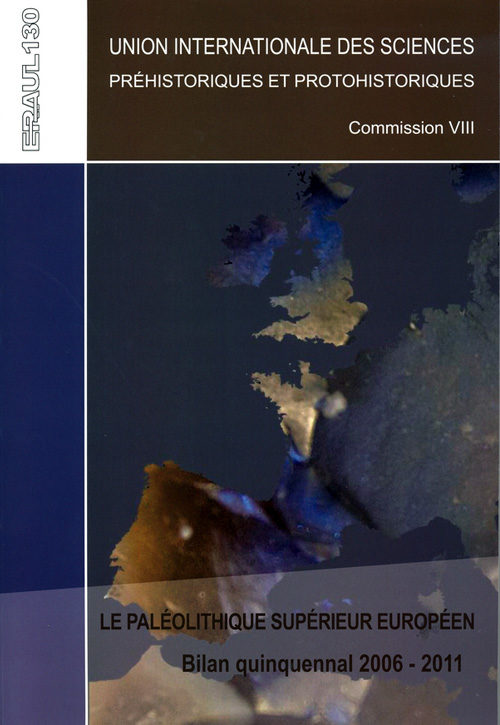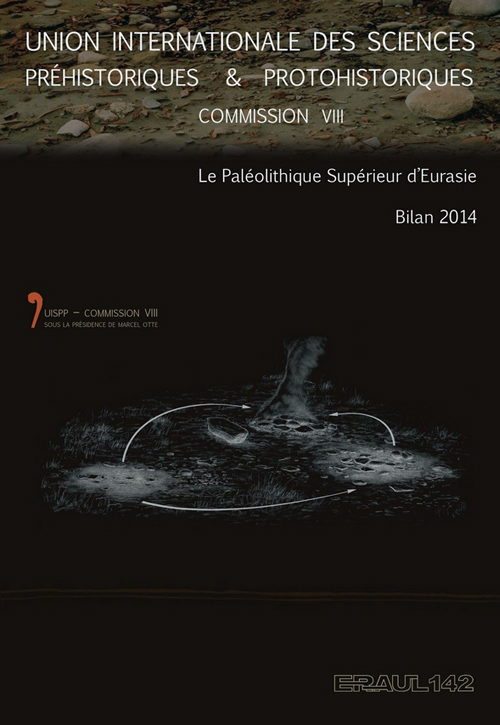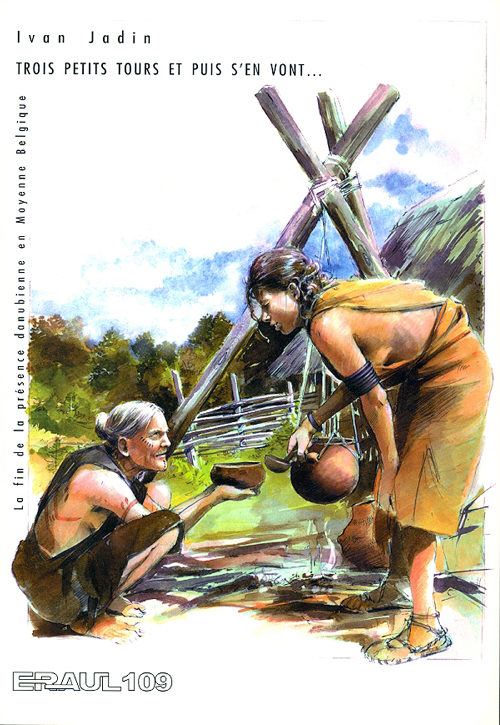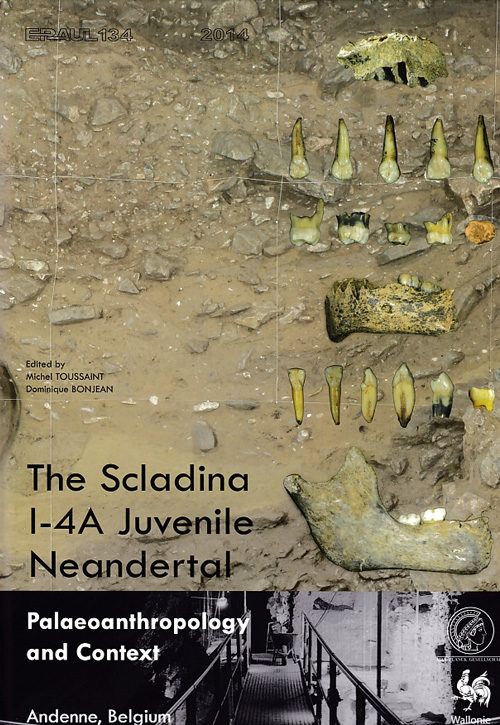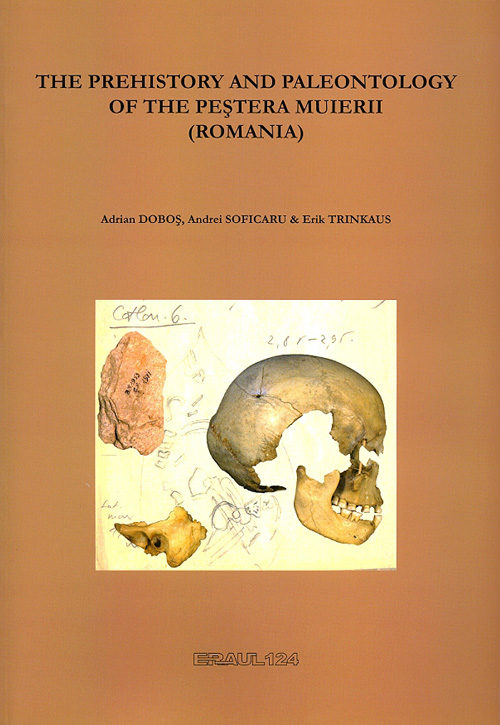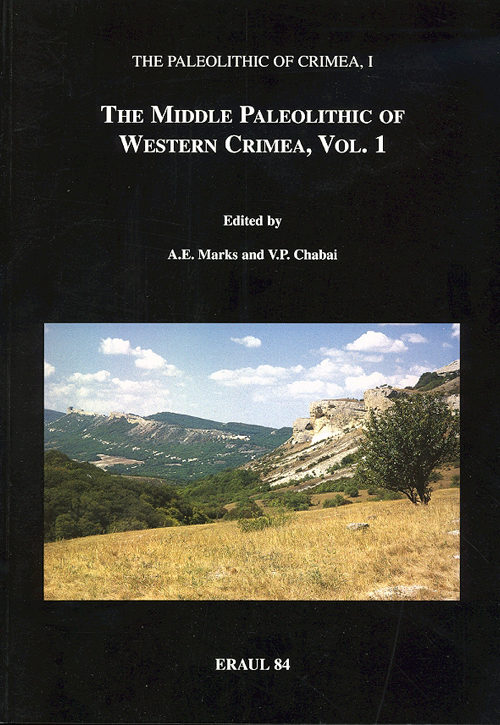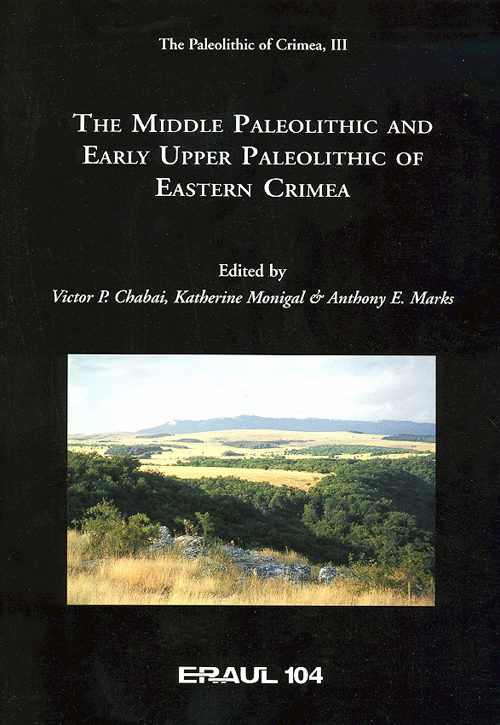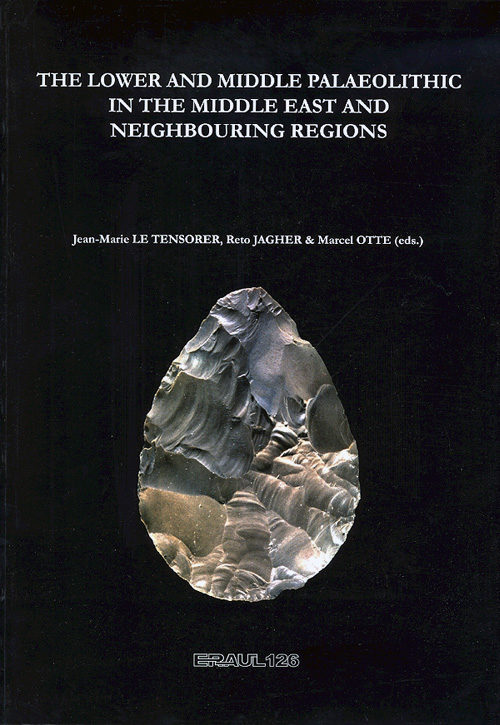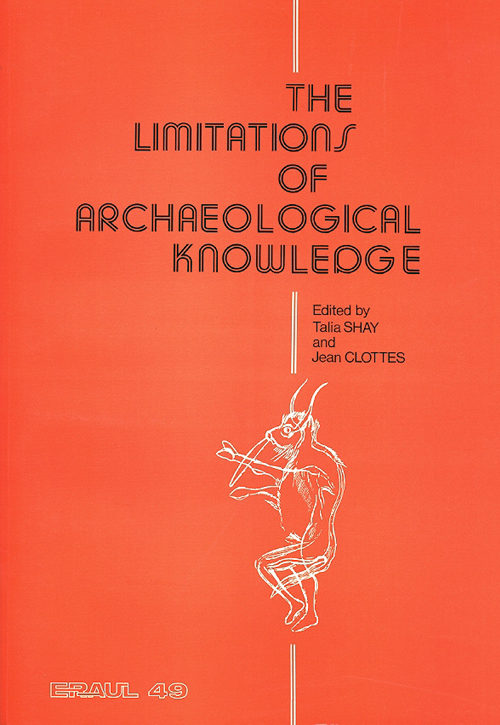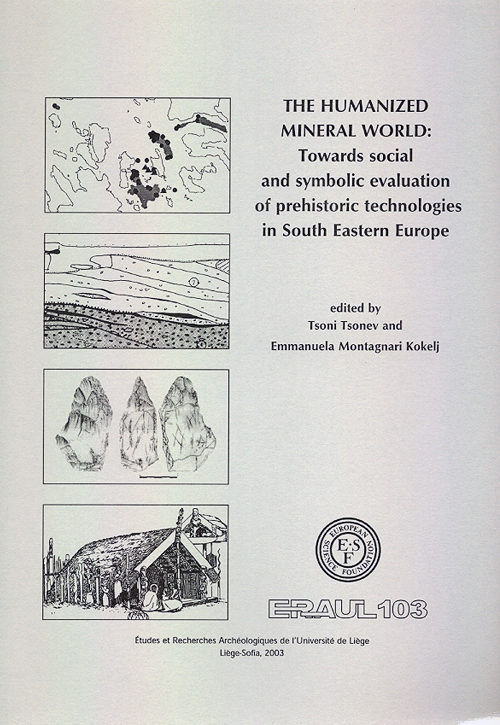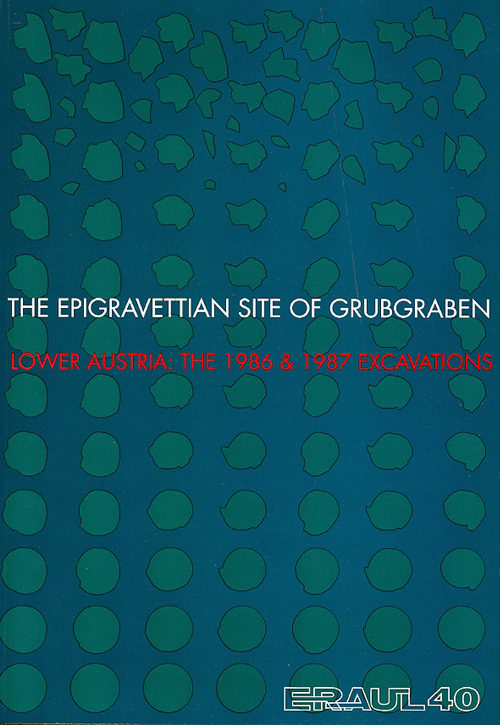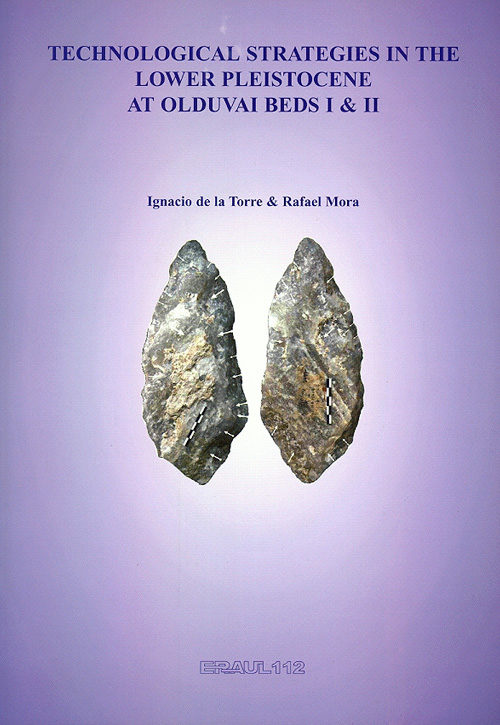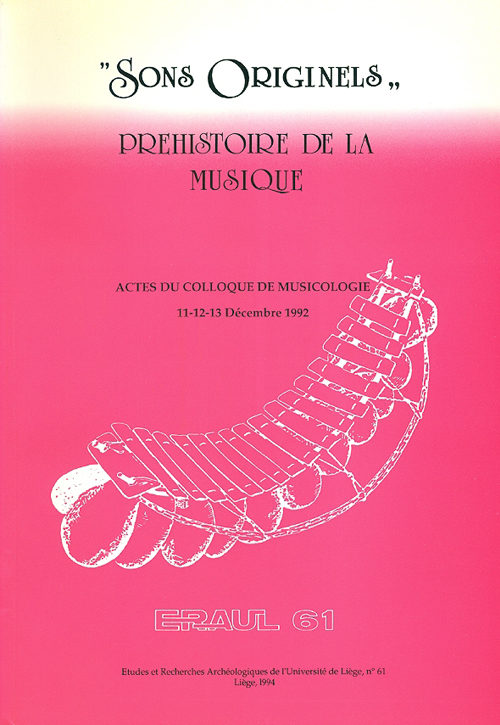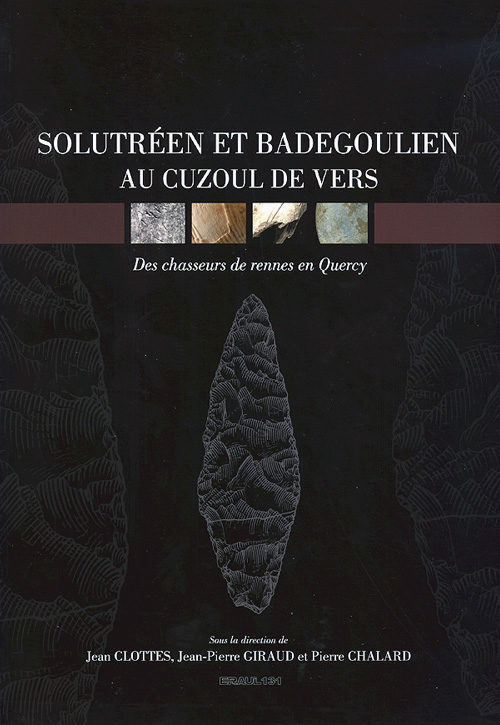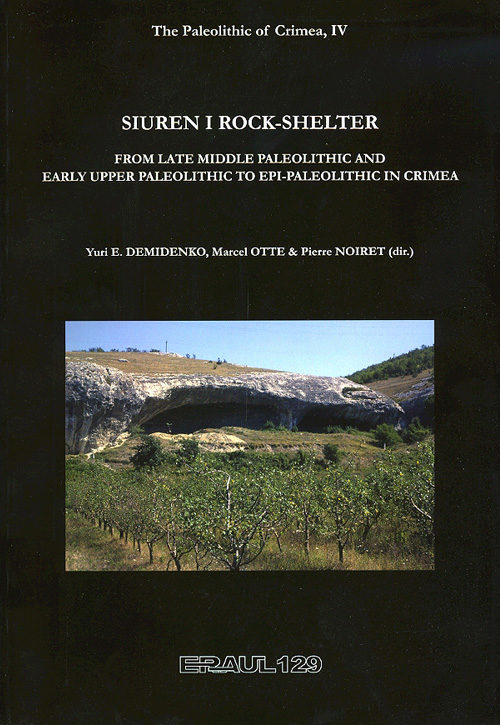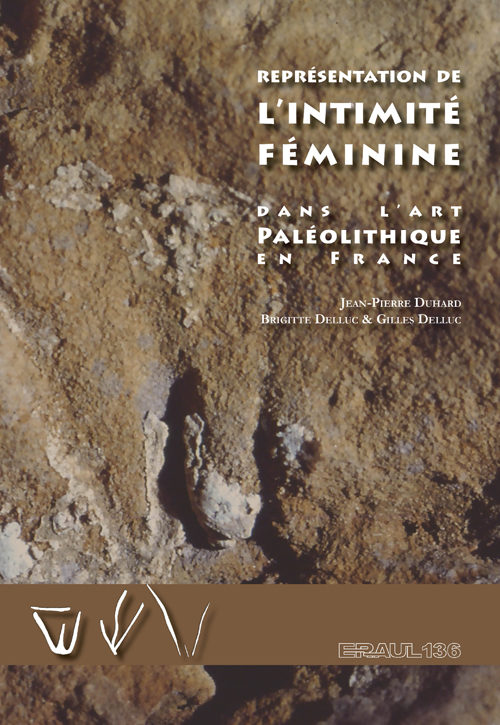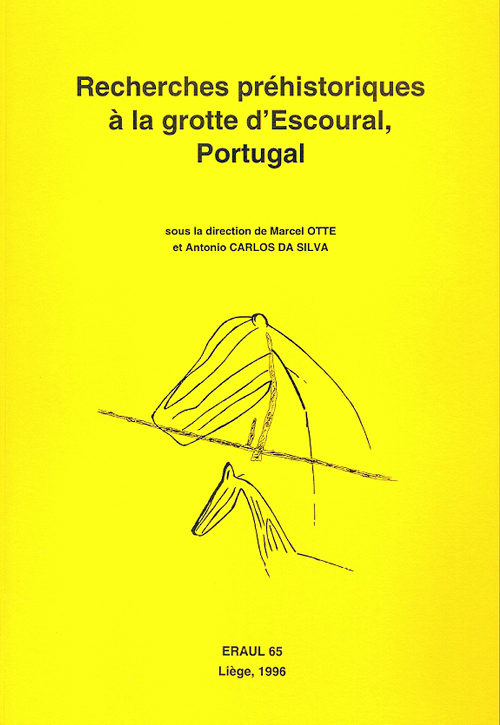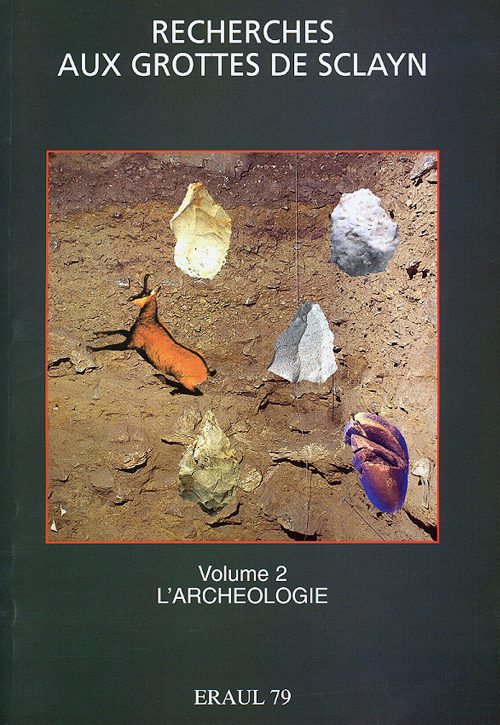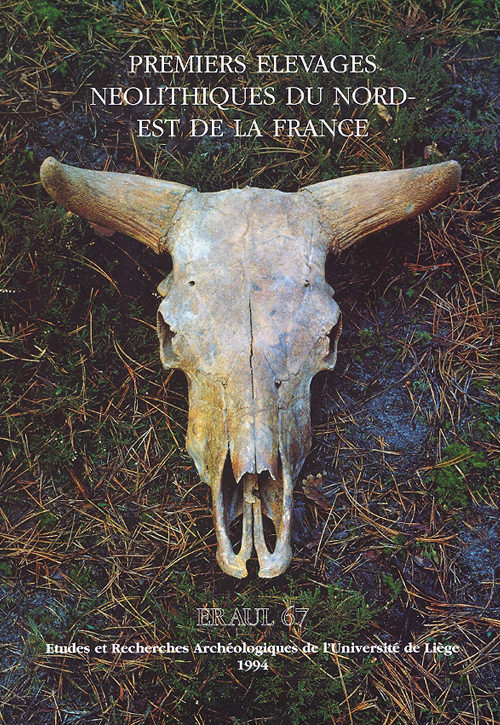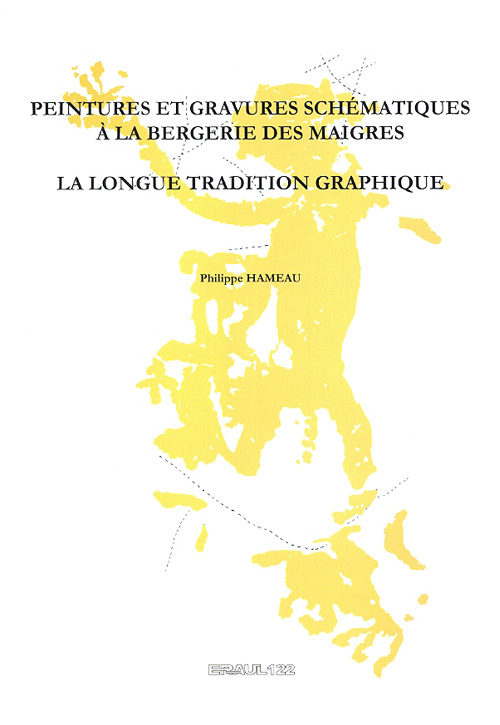-
Le Paléolithique supérieur européen. Bilan quinquennal 2006 – 2011 par Pierre NOIRET (ed.) Auteurs Russia – Anatoly | P. DEREVIANKO, Khizri A. AMIRKHANOV & Sergey A. VASIL’EV Roumanie et République Moldave | Vasile CHIRICA & Valentin-Codrin CHIRICA Greece | Dr. Eugenia ADAM Serbia | Dušan MIHAILOVIĆ & Bojana MIHAILOVIĆ Croatia | Ivor KARAVANIĆ, Darko KOMŠO & Nikola VUKOSAVLJEVIĆ Hungary | Viola T. DOBOSI Slovakia | Ľubomíra KAMINSKÁ Les pays tchèques | Martin OLIVA Allemagne du Sud : L’Aurignacien du Jura souabe | Harald FLOSS Belgique | Marcel OTTE & Pierre NOIRET Région Aquitaine : Dordogne, Gironde, Landes, Pyrénées Atlantiques | Michel LENOIR Des Pyrénées Atlantiques au Languedoc méditerranéen | François BON Italie centrale : Ligurie, Toscane, Latium, Abruzzes | Carlo TOZZI Italie du Sud | Paolo GAMBASSINI, Paolo BOSCATO, Adriana MORONI & Annamaria RONCHITELLI Cantabrian Spain | Lawence Guy STRAUS Catalogne | Josep Mª FULLOLA i PERICOT Nord du Portugal | Thierry AUBRY Southern Portugal | Nuno BICHO, João CASCALHEIRA, João MARREIROS & Telmo PEREIRA
-
Le Paléolithique Supérieur d'Eurasie | Bilan 2014 par Pierre NOIRET & Denise LEESCH (éds) Table des matières
Ce bilan reprend des textes dont l’origine est variée. Trois contributions (V. Chirica, M. Anghelinu & C.-V. Chirica ; J.K. Kozlowski ; D. Leesch) font suite à la séance de la 8e Commission de l’UISPP qui s’est tenue à Neuchâtel (Suisse), les 11 et 12 février 2013, et lors de laquelle plusieurs collègues ont présenté un état de leurs recherches actuelles. Nous tenons à remercier très chaleureusement Marc-Antoine Kaeser, directeur du Laténium et professeur associé à l’université de Neuchâtel, d’avoir bien voulu accueillir cette manifestation. Les autres textes sont, soit des rapports qui n’avaient pas été intégrés au précédent Bilan quinquennal 2006-2011, édité en 2013 (ERAUL 130), soit des mises à jour de contributions parues dans ce même bilan.
1. Les nouvelles découvertes archéologiques sur les sites du Paléolithique supérieur d’Ukraine |2007/2013 | Lioudmila Iakovleva 2. Roumanie |2011-2013 |Vasile Chirica, Mircea Anghelinu & Valentin-Codrin Chirica 3. Poland |Jarosław Wilczyński 4. Grèce : Nouvelles données et nouvelles controverses |Janusz K. Kozlowski 5. Greece |2011-2013 |Eugénia Adam 6. Hongrie |Tendances et problèmes |Zsolt Mester 7. Ligurie |Margherita Mussi 8. Italie nord orientale |2007/2012 |Marco Peresani 9. Suisse |1983/2013 |Chronologie, habitat et territoire |Denise Leesch 10. Luxembourg |2009/2013 |Foni Le Brun-Ricalens 11. France du Centre-Est |2011/2014 |(Alsace, Bourgogne, Champagne-Ardenne, Franche-Comté, Lorraine & Rhône-Alpes) |Gérald Bereiziat 12. The Spanish Meseta |Carmen Cacho 13. Catalogne |2011/2013 |Josep Mª Fullola Pericot 14. Cantabrian Spain |2012/2014 |Lawrence Guy Straus 15. Vallée de l’Ebre |nouveautés et bilan |Pilar Utrilla et Rafael Domingo 16. Sud ibérique |2006/2013 |Miguel Cortés Sánchez
-
par Ivan JADIN Résumé indisponible.
-
Palaeoanthropology and Context par TOUSSAINT Michel & BONJEAN Auteurs Michel Toussaint, Dominique Bonjean, Gregory Abrams, Sanda Balescu, Stefano Benazzi, Herve Bocherens, Mona Court-Picon, Freddy Damblon, Elise Delaunois, Dorien De Vries, Kevin Di Modica, Sireen El Zaatari, Christophe Falgueres, Paul Haesaerts, Catherine Hanni, Katerina Harvati, Jean-Jacques Hublin, Kristin L. Krueger, Kornelius Kupczik, Adeline Le Cabec, Rhylan McMillan, Anthony J. Olejniczak, Ludovic Orlando, Marcel Otte, Stephane Pirson, Donald J. Reid, Cheryl A. Roy, Matthew M. Skinner, Tanya M. Smith, Paul T. Tafforeau, Christine Verna, Yuji Yokoyama
-
par Adrian DOBOS, Andrei SOFICARU & Erik TRINKAUS Table of Content Chapter 1 | Introduction Chapter 2 | The Peştera Muierii: geological context and chronology Chapter 3 | A history of investigations at the Peştera Muierii Chapter 4 | The vertabrate paleontological remains Chapter 5 | The Paleolithic assemblages Chapter 6 | The Holocene archeological remains Chapter 7 | The Pleistocene human remains Chapter 8 | The Holocene human skeleton from the Galeria Principală Chapter 9 | Paleonthropological implications of the Peştera Muierii Chapter 10 | References
-
par Anthony E. MARKS & Victor P. CHABAI (éd.) Résumé indisponible.
-
par Victor P. CHABAI, Katherine MONIGAL & Anthony E. MARKS (eds) Résumé indisponible.
-
par Jean-Marie LE TENSORER, Reto JAGHER & Marcel OTTE (eds.) Table of content The Core-and-Flake Industry of Bizat Ruhama, Israel: Assessing Early Pleistocene Cultural Affinities | Yossi Zaidner New Acheulian Locality North of Gesher Benot Ya´aqov – Contribution to the Study of the Levantine Acheulian | Gonen Sharon The Lower Palaeolithic in Syria | Sultan Muhesen & Reto Jagher Innovative human behavior between Acheulian and Mousterian: A view from Qesem Cave, Israel | Ran Barkai & Avi Gopher The Mugharan Tradition Reconsidered | Avraham Ronen, Izak Gisis & Ivan Tchernov Recent progress in Lower and Middle Palaeolithic research at Dederiyeh cave, northwest Syria | Yoshihiro Nishiaki, Yosef Kanjo, Sultan Muhesen & Takeru Akazawa Le Yabroudien en Syrie : état de la question et enjeux de la recherche | Amjad Al Qadi The contribution of Hayonim cave assemblages to the understanding of the so-called Early Levantine Mousterian | Liliane Meignen Capturing a Moment: Identifying Short-lived Activity Locations in Amud Cave, Israel | Erella Hovers, Ariel Malinsky-Buller, Mae Goder-Goldberger & Ravid Ektshtain Late Levantine Mousterian Spatial Patterns at Landscape and Intrasite Scales in Southern Jordan | Donald O. Henry Levallois points production from eastern Yemen and some comparisons with assemblages from East-Africa, Europe and the Levant | Rémy Crassard & Céline Thiébaut Development of a geospatial database with WebGIS functions for the Paleolithic of the Iranian Plateau | Saman Heydari, Elham Ghasidian, Michael Märker & Nicholas J. Conard The Late Middle Palaeolithic and Early Upper Palaeolithic of the northeastern and eastern edges of the Great Mediterranean (south of Eastern Europe and Levant): any archaeological similarities ? | Yuri E. Demidenko The Archaeology of an Illusion: The Middle-Upper Paleolithic Transition in the Levant | John J. Shea La transition du Moustérien à L’Aurignacien au Zagros | Marcel Otte & Janusz Kozlowski El Kowm, a key area for the Palaeolithic of the Levant in Central Syria | Reto Jagher & Jean-Marie Le Tensorer Nadaouiyeh Aïn Askar – Acheulean variability in the Central Syrian Desert | Reto Jagher The faunal remains from Nadaouiyeh Aïn Askar (Syria). Preliminary indications of animal acquisition in an Acheulean site | Nicole Reynaud Savioz Hummal: a very long Paleolithic sequence in the steppe of central Syria – considerations on Lower Paleolithic and the beginning of Middle Paleolithic | Jean-Marie Le Tensorer, Vera von Falkenstein, Hélène Le Tensorer & Sultan Muhesen Chronometric age estimates for the site of Hummal (El Kowm, Syria) | Daniel Richter, Thomas C. Hauck, Dorota Wojtczak, Jean-Marie Le Tensorer & Sultan Muhesen A Yabroudian Equid skull and upper cheek teeth from the site of Hummal (El Kowm, Syria) | Hani El Suede The Lower Palaeolithic assemblage of Hummal | Fabio Wegmüller A three-dimensional model of the Palaeolithic site of Hummal (Central Syria) | Daniel Schuhmann Hummal (Central Syria) and its Eponymous Industry | Dorota Wojtczak The Mousterian sequence of Hummal and its tentative placement in the Levantine Middle Palaeolithic | Thomas C. Hauck
-
par Talia SHAY & Jean CLOTTES (éds) Résumé indisponible.
-
Proceedings of the ESF workshop, Sofia 3-6 september 2003 par Tsoni TSONEV and Emmanuela MONTAGNARI KOKELJ Résumé indisponible.
-
par Anta MONTET-WHITE (éd) Résumé indisponible.
-
par Ignacio DE LA TORRE & Rafael MORA Abstract
This book envisages an analysis of the lithic collections from several sites Mary Leakey excavated between 1960 and 1963 in Bed I and II at Olduvai (Tanzania), currently stored at the National Museum of Nairobi (Kenya) and previously published in a classic monograph (Leakey 1971). Nonetheless, we have conceived this study from a standpoint that relates more to aspects concerning technical production than to the typological issues that governed Leakey’s approximation. Furthermore, the Olduvai collections will be contemplated from a contextual prism, bearing in mind a constant concern in reconstructing the processes that formed the archaeological record, aiming to understand the differences or similarities that appear between the different assemblages. This monograph focuses on the analysis of lithic materials. We assume blood cannot be squeezed from stones, paraphrasing the title of one of the articles by Isaac (1977b). Yet, we can reconstruct part of the puzzle concerning human evolution by understanding the technological guidelines and technical patterns in use during the transformation processes, which are, in short, telling of the hominids´ behaviour. A meticulous analysis of the lithic objects can provide valuable information to comprehend their technical abilities, cognitive skills and economic concerns. Therefore, each lithic object will be studied analytically, attempting to integrate them in the corresponding stage of the chaîne opératoire. It is essential to keep a distance from the last works that examined the Olduvai sequence (Ludwig 1999; Kimura 1997, 1999, 2002). Therein, artefact categories stand their own ground (in a classically typological conception), and are compared in isolation throughout a chronological sequence. In contrast, we consider that it is essential to analyse each lithic element in connection with others, and each site as a whole, since each assemblage is subjected to specific, exceptional circumstances. Only upon understanding each collection after comparing the different categories it comprises, it is possible to elaborate conclusions that can subsequently be extrapolated and compared to the facts documented in other sites. This work contains constant references to the terms Oldowan and Acheulean. The Oldowan was defined precisely in Olduvai, therefore this location is the perfect setting for the justification of the term. In fact, the term Oldowan has well-defined chronological and cultural connotations, whilst Mode 1 defined by Grahame Clark (1969) has, over recent years, been used without enough precision. The same occurs with the Acheulean, which will predominate herein over the term Mode 2, and which also presents specific technological, chronological and cultural features. One of the key goals this work establishes is precisely to define the attributes that characterise the Oldowan and the Acheulean, and to attempt to understand the technological and cultural connotations this differentiation entails. Therefore it is essential that this dichotomy exists explicitly in our discourse. In the first chapter we will expound some general notions on the historiography of the Olduvai expeditions, the stratigraphy, the radiometric and paleo-ecological framework, the archaeological sequence Leakey defined, and the methodology employed in our re-examination. By doing so, we aim to create a suitable contextual framework in which to develop the technological study. As regards all other matters, the index of this work respects a diachronic structure, starting with the oldest sites in Bed I and moving through the archaeological sequence to the top of Bed II, the chronological limit for our research. After presenting a systematic description of each site in its corresponding chapter, general conclusions that summarise and present a global interpretation of the Olduvai sequence appear at the end of the monograph. Our goal is to combine a systematic study of the lithic reduction methods and chaînes opératoires, with a vaster vision that integrates these technical systems in the general framework of the land-use by hominids. We assume that the manufacturing of any stone tool is the result of a series of technical, economic, social and symbolic options that can be encompassed under the term strategies (Perlès 1992:225). From this general perspective, in this work we will attempt to understand the technological strategies used by the humans that lived in Olduvai during the Lower Pleistocene. (The authors).
-
Préhistoire de la musique, Actes du colloque international de Musicologie (Liège, 11-13 décembre 1993) par Marcel OTTE (éd) Résumé indisponible.
-
Des chasseurs de rennes en Quercy par Jean CLOTTES, Jean-Pierre GIRAUD & Pierre CHALARD (dir.) Table des matières
Préface | Jacques Jaubert, Michel Barbaza & Michel Vaginay Avant-propos | Jean Clottes, Jean-Pierre Giraud & Pierre Chalard Historique des recherches : la découverte, la fouille et l’étude | Jean Clottes & Jean-Pierre Giraud Le cadre naturel | Guy Astruc & Laurent Bruxelles Lithostratigraphie, dynamique sédimentaire et implications | Bertrand Kervazo & Stéphane Konik Les micromammifères | Emmanuel Desclaux Le cadre chronologique : datations 14C | Christine Oberlin & Hélène Valladas Les industries lithiques du Solutréen Pierre Chalard, André Morala & Alain Turq, Pétroarchéologie du silex Christian Servelle, Les autres roches Caroline Renard, L’organisation des productions en silex, implications techno-économiques Les industries lithiques du Badegoulien Pierre Chalard, André Morala & Alain Turq, Pétroarchéologie du silex Christian Servelle, Les autres roches Jean Clottes, Carole Fritz, Jean-Pierre Giraud & Christian Servelle, Les galets portant des traces d’utilisation Sylvain Ducasse & Laure-Amélie Lelouvier, Techno-économie des équipements en silex, une première approche diachronique L’art mobilier : le galet gravé badegoulien | Jean Clottes, Carole Fritz, Jean-Pierre Giraud, Christian Servelle Les colorants | Marie-Pierre Pomiès & Colette Vignaud Archéozoologie | Jean-Christophe Castel Analyse cémentochronologique | Hélène Martin & Olivier Le Gall, avec la collaboration de Bernard Martin Premier regard sur la matière dure animale ouvragée | Yanik Le Guillou Les coquillages | Yvette Taborin Le travail du bois de renne dans les couches badegouliennes | Jean-Marc Pétillon & Aline Averbouh Les vestiges humains : deux exemples de traitement du cadavre | Dominique Henri-Gambier & Sébastien Villotte Structures d’habitat et organisation de l’espace | Nathalie Fourment & Jean-Pierre Giraud De 20 000 à 18 000 BP en Quercy : Apports de la séquence du Cuzoul de Vers à la compréhension de l’évolution des comportements socio-économiques entre Solutréen et Badegoulien | Sylvain Ducasse & Caroline Renard
avec la collaboration de Guy Astruc, Aline Averbouh, Laurent Bruxelles, Jean-Christophe Castel, Pierre Chalard, Jean Clottes, Emmanuel Desclaux, Nathalie Fourment, Carole Fritz, Jean-Pierre Giraud, Dominique Henri-Gambier, Bertrand Kervazo, Stéphane Konik, Olivier Le Gall, Yanik Le Guillou, Laure-Amélie Lelouvier, Bertrand Martin, Hélène Martin, André Morala, Christine Oberlin, Jean-Marc Pétillon, Marie-Pierre Pomiès, Christian Servelle, Yvette Taborin, Alain Turq, Hélène Valladas, Colette Vignaud, Sébastien Villotte
Bibliographie -
From Late Middle Paleolithic and Early Upper Paleolithic to Epi-Paleolithic in Crimea. [The Paleolithic of Crimea, IV] par Yuri E. DEMIDENKO, Marcel OTTE & Pierre NOIRET (dirs) Table of content Préface | Foreword | Marcel Otte The history of investigations at Siuren I and different interpretations of the site’s archaeological context | Yuri E. Demidenko Siuren I: excavation strategies and methodologies | Alexandre I. Yevtushenko† Siuren I: Stratigraphic and Archaeological Sequences for the 1990s Excavations | Alexandre I. Yevtushenko† Radiocarbon Dates for the Siuren I sequence | Yuri E. Demidenko & Pierre Noiret Zooarchaeological analysis of the faunal assemblages from Siuren I, Crimea (Ukraine) | Jessica Massé & Marylène Patou-Mathis Small Mammals from Paleolithic Site Siuren I | Anastasia K. Markova Snail Fauna Data from Siuren I | Constantine Mikhailesku The Worked Bone Artifacts from the Siuren I Rock-Shelter (Crimea): the 1990s Excavation | Natalia B. Akhmetgaleeva The Classification and Attribute Analysis System Applied to the Siuren I Lithic Assemblages | Yuri E. Demidenko Unit H: Lithic Artifacts | Yuri E. Demidenko & Victor P. Chabai Unit G: Lithic Artifacts | Yuri E. Demidenko & Victor P. Chabai Unit F: Lithic Artifacts | Yuri E. Demidenko & Victor P. Chabai Unit E-A: Lithic Artifacts | Yuri E. Demidenko Inter-Unit and Inter-Level Comparisons of Assemblages from the 1990s Units H, G and F | Yuri E. Demidenko Comparisons between the Siuren I Assemblages from the 1920s Lower and Middle Layers and the 1990s Units G and F | Yuri E. Demidenko Interpretation of the Middle Paleolithic Component in the Early Aurignacian Units H and G and the 1920s Lower Layer | Yuri E. Demidenko The Problem of Industrial Attribution of Artifacts from the Upper Cultural Bearing Deposits at Siuren I: 1920s Excavations Upper Layer and 1990s Excavations Units E-A | Yuri E. Demidenko The Siuren-I Aurignacian of Krems-Dufour Type Industries in the Context of the European Aurignacian | Yuri E. Demidenko & Pierre Noiret Small Laminar Blanks at Siuren I Rockshelter: Technological & Comparative Approach | Nicolas Zwyns The Siuren I Archaeological Industrial Sequence seen Through the Site’s Human Occupation Events | Yuri E. Demidenko Looking East | Marcel Otte Concluding Considerations | Yuri E. Demidenko Perspectives | Marcel Otte & Pierre Noiret References
-
par Jean-Pierre DUHARD & Brigitte et Gilles DELLUC Table des matières Préface, Yves Coppens Préambule Chapitre I – Description de la vulve A – Terminologie 1 – Terminologie des préhistoriens 2 – Terminologie des anatomistes B – La représentation paléolithique de la vulve 1 – Morphologie des vulves incorporées 2 – Influence de la culture et du support 3 – Le point de vue fessier de la vulve Chapitre II – Les représentations génitales féminines paléolithiques A – Le diagnostic de vulve féminine 1 – Reconnaître une vulve féminine dans la représentation 2 – Éliminer les représentations qui ne sont pas des vulves féminines B – Les représentations paléolithiques de la vulve Chapitre III – Corpus des représentations de vulves au Paléolithique Chapitre IV – Naturalisme des images génitales paléolithiques A – Les Paléolithiques et l’anatomie 1 – L’anatomie humaine externe 2 – L’anatomie humaine interne B – Le réalisme des vulves paléolithiques 1 – Réalisme et graphisme 2 – Le schématisme anatomique 3 – Le réalisme anatomique 4 – Raisons au défaut de réalisme « photographique » 5 – Le réalisme physiologique C – Réalisme et symbolisme 1 – L’évocation de la fécondité 2 – Sociologie de la sexualité 3 – L’évocation de la sexualité des Paléolithiques 4 – Les manifestations de la sexualité dans l’art des Paléolithiques 5 – La vulve et le sang Chapitre V – La vulve dans l’art paléolithique : comment, qui et pourquoi ? A – Une image vulvaire multiforme 1 – Montrée et cachée 2 – Miniature et démesurée 3 – Arrondie et angulaire 4 – Sur parois ou blocs et mobilière 5 – Associées entre elles 6 – Pariétale complétée par un corps humain 7 – Associée à un humain féminin 8 – Associée à un humain masculin 9 – Associée à un phallus 10 – Associée à un humain de sexe indéterminé 11 – Associée à un animal 12 – Uniques et isolées B – Qui sont les auteurs des œuvres ? 1 – L’âge des artistes 2 – Le sexe des artistes et la division sexuelle du travail 3 – Le révisionnisme féministe 4 – Des œuvres faites pour les hommes ? 5 – Que penser du rôle respectif de l’homme et de la femme dans les sociétés préhistoriques ? C – Pourquoi représenter des vulves ? 1 – La vulve, organe sexuel 2 – L’instinct de plaisir et l’hétérosexualité 3 – Une production artistique sexualisée dans les cavernes et abris 4 – Une production artistique sexualisée dans les gisements mobiliers 5 – Les « ex-votos » 6 – Les analogies entre pariétal et mobilier 7 – La vulve, première écriture 8 – La vulve, une des premières figurations des Paléolithiques 9 – La vulve, une forme d’écriture 10 – L’art et le langage 11 – L’orage hormonal de l’adolescence Conclusion Bibliographie
-
par Marcel OTTE & Antonio CARLOS DA SILVA (dir.) Résumé indisponible.
-
Vol.2: L’archéologie par Marcel OTTE, Marylène PATOU-MATHIS & Dominique BONJEAN (dir.) Résumé indisponible.
-
par Rose-Marie ARBOGAST Résumé indisponible.
-
La longue tradition graphique par Philippe HAMEAU Table des matières I. Présentation II. Les lieux Relief et géologie du massif d’Agnis Les surfaces karstiques de l’Agnis Évolution géologique au Quaternaire La végétation actuelle du massif Le complexe dit des Maigres III. Les occupations du site Stratigraphie Les unités sédimentaires Commentaires L’occupation préhistorique L’environnement végétal Répartition du mobilier archéologique L’industrie lithique taillée L’industrie lithique polie et les galets La céramique Les restes anthropologiques La faune L’industrie osseuse Les nodules de matière colorante Datation La période historique La céramique Les monnaies Le mobilier métallique Des pierres à fusil Datations IV. Les expressions graphiques État de la paroi Les peintures Inventaire Styles et technique Datation Les gravures Styles, technique et datation V. L’abri peint Les espaces Le cadre physique L’éloignement des habitats Le choix du site L’aménagement des lieux L’iconographie Les principes de l’expression schématique Les figures peintes du site Les données du mobilier L’état du mobilier Le débitage des matières siliceuses Le statut des armatures La part du feu Le cas de la faune Les ossements humains La fréquentation du site au Néolithique La compatibilité des fonctions Passage et transformation VI. L’abri gravé Figures et thèmes L’Homme à la palmette L’organisation du panneau La longue tradition graphique Épilogue graphique VII. Regards croisés Planches hors texte Encart 1 Encart 2 Bibliographie

